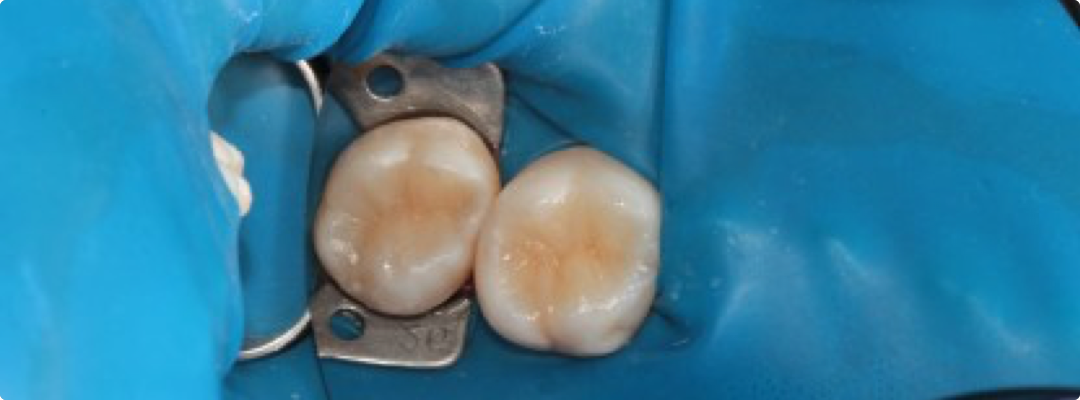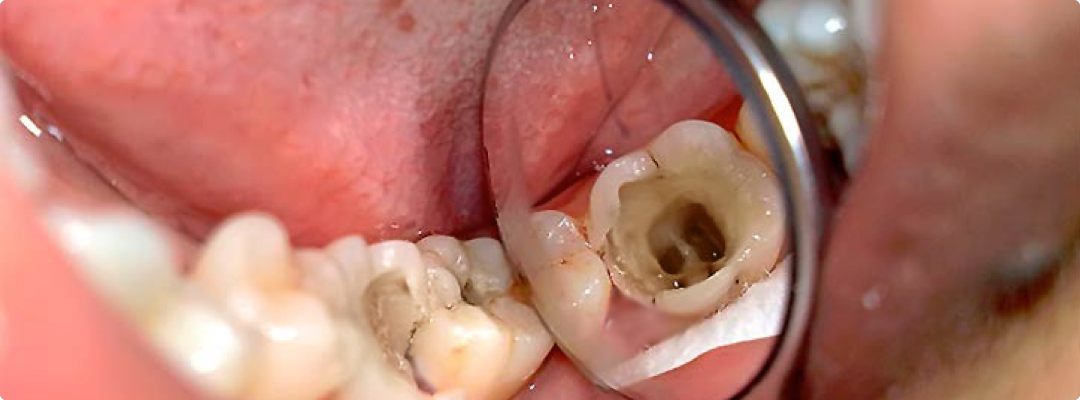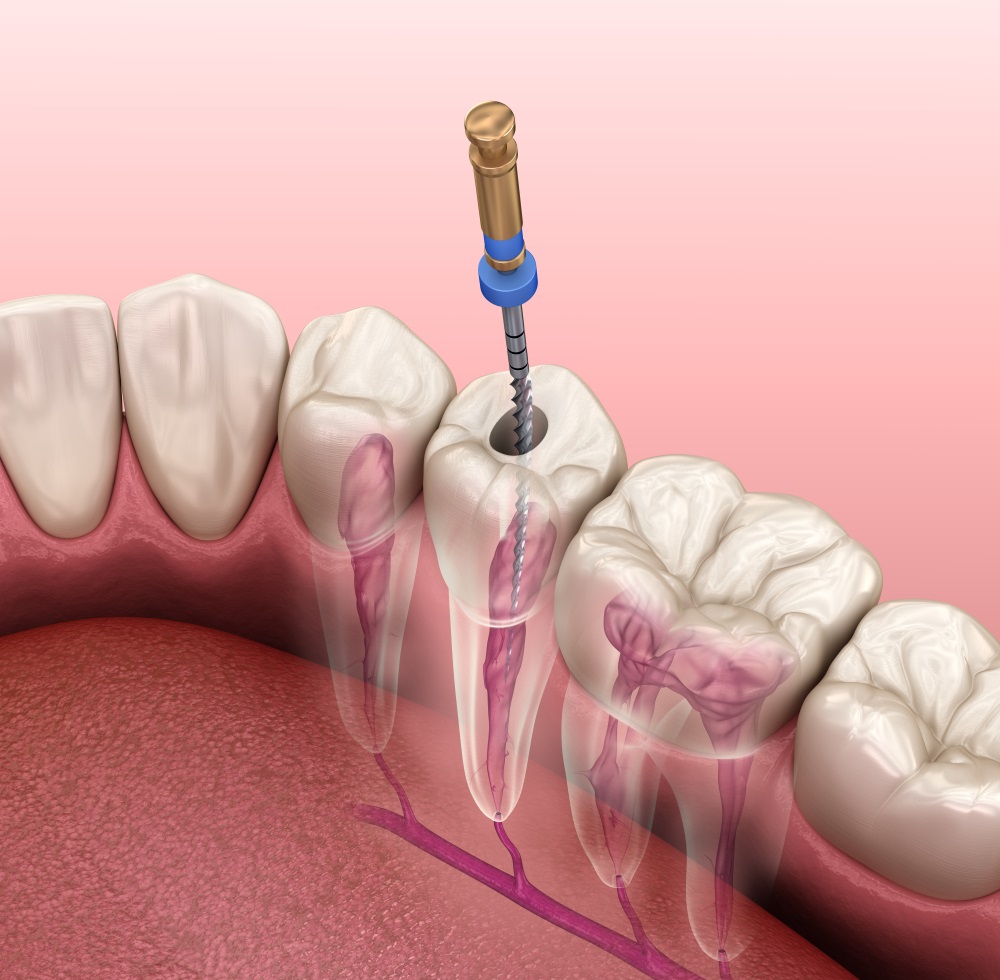Endodontics is a section of dentistry dedicated to the study of pulp and dentin structure, prevention and treatment of complications of dental caries – pulpitis and periodontitis, as well as the application of various techniques for cleaning root canals. The main goal of endodontic treatment is to restore the function of a healthy tooth by removing infection from the root canals.
The treatment of root canals is performed by a highly specialized dentist – endodontist, who conducts the appointment with the use of a microscope.
Structure and number of root canals
Each tooth consists of a crown, neck and root. The root, which occupies about 70% of the total volume of the tooth, contains a cavity, the so-called pulp chamber, which passes into one or more root canals. In the anterior group of teeth, as a rule, the number of canals is less than in the lateral group. To determine their exact number, structure and features, the dentist uses three-dimensional (3D) images obtained as a result of radiologic examination.
Surprising but true: the number of root canals in a tooth is not always the same as the number of roots.
Problems requiring endodontic treatment
- pulpitis
- periodontitis
- complications from previous interventions
- preparation for crowns or inlays
Algorithm of endodontic treatment
For successful endodontic treatment, the doctor must have perfect knowledge of the anatomical and morphological structure of the root canals. Cleaning of root canals is carried out in three main stages. It is important to note that in the clinic “MediLine” this procedure is performed under local anesthesia with the use of modern anesthetic drugs.
- Providing access to the canal
The first stage consists in the preparation of the cavity, installation of cofferdam (latex plate for isolation of the tooth), preparation of the carious cavity, removal of old restorations. - Treatment of canals
The doctor gently removes the inflamed pulp, followed by cleaning the canals. This is necessary to prepare the canals for filling. - Filling the canals
The last stage of treatment of canals consists in their complete sealing with a special non-absorbable material – gutta-percha. Consistent fulfillment of all stages of endodontic treatment by the doctor guarantees the full restoration of tooth functioning after cleaning the canals.
Baby teeth are not much different in structure from permanent teeth. They also need root canal treatment for pulpitis or periodontitis. However, thin canal walls, weak mineralization of dentin and a relatively large apical opening require the doctor to be particularly careful in performing mechanical treatment of canals.
When choosing a clinic for high-quality endodontic treatment, the patient should pay attention to the following fundamentally important points.

Competent consultation
Competent consultation of a dentist – a detailed interview and careful visual inspection of the patient’s oral cavity. During the consultation, you will be able to learn about the state of your health and determine how well the doctor is able to make you feel at ease and create a comfortable environment for treatment.
- Diagnosis
In order to make an accurate diagnosis and treatment plan, a radiologic examination is performed. Before treatment of canals, a computer tomogram is necessarily carried out, as only with its help it is possible to determine the number of canals in the tooth to be treated. - Obligatory installation of a cofferdam
Cofferdam is a special latex plate, with the help of which the doctor isolates the tooth (group of teeth) requiring treatment from the rest.
Advantages of using a cofferdam during endodontic treatment
- protection from saliva and microorganisms in the working area
- minimal contact of mucosa with aggressive chemical solutions
- prevention of ingress of pieces of old fillings, solutions and instruments into the oral cavity and respiratory tract
- improvement of treatment prognosis by 25%

Method of canal treatment
The method of root canal treatment, which determines the duration and effectiveness of treatment. Manual method of canal cleaning with the help of special instruments, similar to thin twisted needles, is quite long and tedious for both the patient and the doctor. Modern mechanical methods with the use of endomotor and flexible nickel-titanium instruments allow faster and more effective cleaning of even a crooked root canal. The use of ultrasonic scaler with special endodontic attachments can remove pulp remnants, widen narrow canals, clean them from old gutta-percha or remove a broken instrument.
According to most dentists, the use of only one method of cleaning does not give a 100% result of quality canal irrigation. That is why in the clinic “MediLine” during endodontic treatment is used both mechanical and passive ultrasonic cleaning of root canals with the use of medical treatment with special disinfectants.
- Control image
during or after endodontic treatment allows the doctor to make sure of the quality of the work done and avoid negative consequences. - Use of a microscope or other modern magnifying optics
In the clinic every dental therapist actively uses a microscope in his work, which allows to carry out under multiple magnification effective treatment, thorough disinfection and reliable sealing of canals, and this, as we know, is the basic principle of any qualified endodontic treatment.

Tooth pain after canal treatment
Sometimes after canal treatment, a patient will complain of toothache. It is acceptable to have pain for three days, provided that its intensity is reduced. The main thing is to follow all the doctor’s instructions.
If the pain after cleaning the canals over time only increases, then this is a reason to visit the dentist again. If you have been diagnosed with periodontitis, it is possible that one endodontic treatment will not be enough, and the tooth will hurt even after high-quality treatment of the canals. In this case, you should not self-medicate, but immediately consult a doctor, who after diagnosis will prescribe additional surgical or drug treatment.




